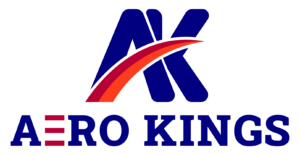
24-Hour Emergency Board Up
Add a review FollowOverview
-
Founded Date October 6, 1928
-
Sectors Law and Legal Services
-
Posted Jobs 0
-
Viewed 77
Company Description
20 Up And Coming Commercial Boarding Up Stars To Watch The Commercial Boarding Up Industry
Commercial Boarding Up: A Comprehensive Guide
In business world, security is paramount. Whether handling a retailer, office complex, or storage facility, protecting physical assets is crucial, especially in times of crisis. One major preventive measure businesses can take is boarding up their properties. This article checks out the concept of commercial boarding up, including its advantages, techniques, and finest practices for application.
What is Commercial Boarding Up?
Commercial boarding up refers to the process of briefly protecting windows and doors of commercial homes by covering them with panels or boards. This practice is typically made use of during emergencies such as natural disasters, vandalism, or renovations, or when a business leaves an establishment unoccupied for an extended period. The ultimate aim is to prevent unapproved gain access to, hinder theft, and secure property against damage.

Why is Commercial Boarding Up Necessary?
The need for commercial boarding up typically arises for numerous reasons:
-
Natural Disasters: Hurricanes, tornadoes, and severe storms can cause significant damage to buildings through high winds and flying debris. Boarding up can lessen possible damage to doors and windows.
-
Vandalism and Theft: Unsecured facilities are vulnerable to burglaries and vandalism. Boarding up can hinder criminal activity and secure valuable inventory and devices.
-
Building and Renovations: During repair, it may be needed to limit access to particular locations, making sure security and security.
-
Long-Term Vacancies: Unoccupied buildings can become targets for crouching or breaking and entering. Boarding up deals protection up until the property can be secured or repurposed.
Methods of Commercial Boarding Up
There are a number of techniques to board up a commercial property successfully. These can differ based on the size and structure of the building, the level of security needed, and the period for which the boards must stay in location.
Typical Boarding Materials
| Product | Features | Finest Used For |
|---|---|---|
| Plywood | Strong and readily available | Short-term boarding, high threat |
| OSB (Oriented Strand Board) | Cost-effective, decent strength | Brief to medium-term boarding |
| Metal Sheets | Incredibly durable, fireproof | High-security needs, long-lasting |
| Lexan or Polycarbonate | Light-weight, impact-resistant | High-security glass replacement |
Setup Techniques
-
Screw and Anchor: Secure the boards to the window or door frames utilizing screws that permeate deeply into the wall for stability.
-
Brackets: Use brackets to enhance the boards, especially for larger openings.
-
Secure with Bolts: In high-risk locations, bolts can be utilized for added security, guaranteeing that boards can not be quickly removed.
-
Frame Construction: For prolonged direct exposure, building a frame to hold the boards instead of attaching directly to the structure can be beneficial.
Temporary vs. Permanent Boarding Up
While most boarding up practices are planned to be temporary, there are cases where permanent or semi-permanent solutions might be essential. It is important to evaluate the private requirements of the property and function of the boarding up.
Finest Practices for Boarding Up
To make sure the efficiency of commercial boarding up, specific best practices ought to be followed:
-
Assess vulnerabilities: Identify all points of entry and examine the weaknesses that may be exploited throughout a crisis.
-
Use the ideal materials: Choose the proper boarding materials based on the level of hazard and duration of boarding up.
-
Professional setup: For bigger or greatly affected homes, engaging professional services can guarantee exceptional security and compliance with local policies.
-
Preserve secure gain access to points: Even while boarding up, ensure that you have secure access points for emergency services, if needed.
-
Routine evaluations: Periodically examine the boarding to guarantee it stays secure and undamaged, especially after storms or high winds.
FAQs About Commercial Boarding Up
What is the ideal thickness for plywood boarding?
A thickness of a minimum of 1/2 inch is advised for plywood boarding up to guarantee it can withstand high winds and effect.
How can I get rid of boards after installation?
Typically, loosening the boards or getting rid of bolts must enable easy removal. However, it is vital to have the appropriate tools on hand.
Can I board up my business myself?
Yes, lots of services opt to board up themselves; nevertheless, it is typically advised to hire experts for larger homes or in high-risk situations.
For how long can boards keep up?
The time boards can stay in location depends on various aspects, consisting of local ordinances, the security needed, and physical conditions affecting the property.
How do I safeguard my business from prospective vandalism when it is closed?
In addition to boarding up, consider setting up security cams, lighting, and alarm systems to improve the general security of your property when closed.
Commercial boarding up is a strategic method to protecting companies from various prospective risks, including natural disasters and criminal activity. By understanding different approaches, products, and finest practices, company owner can improve the security of their homes, reduce damage, and make sure the safety of their assets. While the procedure may appear simple, proactively engaging in extensive preparation and assessment might yield the very best lead to safeguarding a business’s most crucial financial investments.
